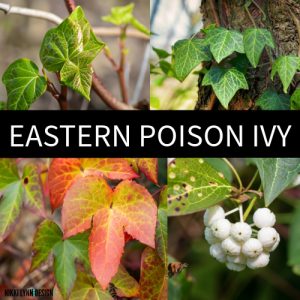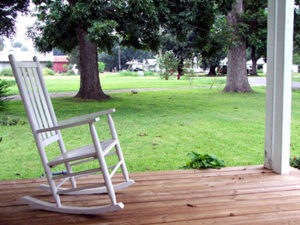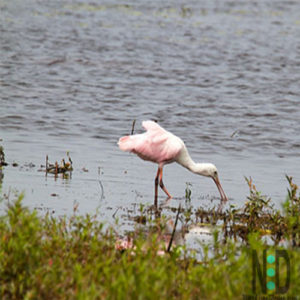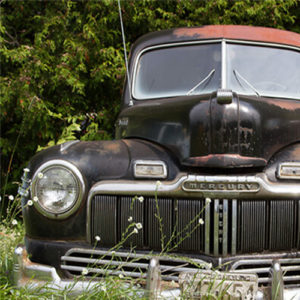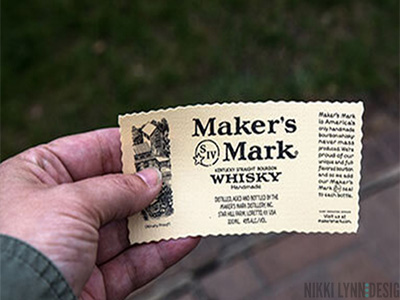Hello, dear readers! Picture this: It’s a crisp late-summer afternoon, the sun filtering through the canopy of ancient oaks, and the air filled with the sweet, tangy scent of ripe wild grapes dangling like hidden jewels along a winding trail.
I remember being just five years old, my tiny hands reaching up to pluck those wild grapes off the fence line of my great-grandparents’ property. The juice burst in my mouth like a secret summer elixir, and I can still hear my great-grandma’s gentle voice reminding me to spit out the stones to avoid any tummy troubles. That simple moment sparked a lifelong love for these vines, leading me to turn foraged finds into heartfelt treats like wild grape jelly.
Today, I’ll share that magic with you, blending storytelling, practical tips, and a straightforward recipe to help you create your batch. Whether you’re a seasoned forager or a curious beginner, let’s embark on this delightful journey together. After all, there’s something deeply satisfying about preserving nature’s gifts right in your kitchen.
Making grape jelly from wild grapes can be a delicious and rewarding process. Here’s a simple recipe for wild grape jelly:
The Allure of Wild Grapes: A Forager’s Guide

Wild grapes (Vitis species, such as Vitis riparia in the Midwest) are a true gift of the season, typically ripening from late July through early fall—right around now, as the days grow shorter and the leaves begin to hint at autumn’s colors. These native vines climb trees and fences, turning forgotten corners of woods, fields, and urban edges into secret treasure troves. But before the jelly-making fun, let’s talk about safe and responsible foraging. I always say, the woods whisper their wisdom if you’re willing to listen.
“The frost grape waits for the first cold kiss of autumn, sour until touched by the breath of winter—then sweet as old wine.”
How to Identify and Forage Riverbank Wild Grapes Safely
Foraging is one of life’s simple joys, but comes with responsibilities. Here’s a quick guide to get you started:
- Identification Tips: For riverbank grape, Vitis riparia, or as it is often referred to as frost grape gets sweeter after a hard frost, look for woody vines with tendrils that twist around supports. The leaves are often lobed and heart-shaped, similar to cultivated grapes, but wild varieties might have a more ragged edge. The grapes grow in clusters, starting green and turning from red to deep purple or black when ripe. A key test? Gently squeeze one—if it’s juicy and sweet-tart, it’s ready. Pro tip: Avoid look-alikes like the poisonous Virginia creeper (Parthenocissus quinquefolia), which has compound leaves and no tendrils on the fruit clusters.
- Where to Find Them: Wild grapes thrive in sunny spots along forest edges, riverbanks, or abandoned fields. In my neck of the woods, I often spot them near old fences or along hiking paths. Remember, always forage in areas free from pesticides, traffic pollution, or animal waste.
- Safety First: Never eat anything you’re not 100% sure about—misidentification can lead to serious health issues. Wear gloves to protect against thorns or irritants, and only harvest what you need, leaving plenty for wildlife and future growth. If you’re new to this, join a local foraging group or consult a field guide. And as a gentle reminder: Foraging on private land requires permission, so respect boundaries and leave no trace. Also, when sampling grapes in the moment, always spit out the seeds to avoid any potential digestive discomfort.




Once you’ve gathered your grapes (aim for about 4-5 cups for a batch of jelly), it’s time to head home and transform them into something magical. But before we proceed, let’s touch on the nutritional side. Wild grapes are a natural source of antioxidants and vitamins, like vitamin C, which may support overall wellness.* However, I’m not a doctor, and this is not intended to diagnose, treat, or prevent any disease. Always consult a healthcare professional before making dietary changes, especially if you have allergies or health concerns.
“The grape on the vine is sour, said the fox—but the woods know to wait until frost sings its lullaby.”
Crafting Your Own Wild Grape Jelly: A Step-by-Step Recipe
Now, for the heart of this post—the recipe! Making wild grape jelly is like capturing a piece of the wilderness in a jar. It’s a simple process that fills your kitchen with the aroma of sun-ripened fruit, and it’s perfect for gifting or spreading on warm toast during cozy mornings. This recipe yields about 6 half-pint jars, and I’ve included tips to make it foolproof. Gather your supplies, put on some music, and let’s get started.
Before we dive in, a quick reminder: I’m not a certified food safety expert, and this is for educational purposes only. The USDA and FDA recommend following tested recipes for canning and preserving to avoid risks like botulism or spoilage. Always prioritize safety by using clean equipment, proper storage, and consulting reliable sources like the National Center for Home Food Preservation if you’re unsure. If you have health concerns, such as diabetes, consult a healthcare professional before altering recipes.
Ingredients:
- 4-5 cups of wild grapes (removed from stems and washed)
- 1 cup of water
- 1 package (1.75 oz) of fruit pectin (such as Sure-Jell)
- 5 cups of granulated sugar

to mash the grapes, I remove the additional green stems.
Instructions:
- Prepare the Grapes:
- Wash the wild grapes thoroughly and remove them from the stems, removing all green grapes.
- Extract Juice:
- Place the grapes in a large pot with 1 cup of water.
- Crush the grapes using a potato masher.
- Simmer the crushed grapes over low heat for 10-15 minutes, stirring occasionally.
- Strain the grape mixture through a fine mesh sieve or cheesecloth to extract the juice. You should have about 3 cups of grape juice.
- Place the juice in the refrigerator for 24 hours.
- Strain again. Do not skip refrigerating the juice. All wild grapes have tartaric acid. When heated, the juice will form tartrate crystals. Refrigerating the juice makes it easier to filter more tartrates out. Tartrates are sharp to the mouth & digestive tract. You can easily filter them out with refrigeration & filtering. I do a second filtering after refrigerating the juice for 24 hours.
- Prepare Jars and Lids:
- Sterilize your canning jars and lids by in a boiling water bath for 10 minutes. Allow them to air dry. I sometimes cheat and run only the jars through the dishwasher.
- Cooking the Jelly:
- In a separate bowl, mix the fruit pectin with about 1/4 cup of sugar to prevent clumping.
- Add the grape juice to a large pot and stir in the pectin-sugar mixture.
- Bring the mixture to a boil over medium-high heat, stirring constantly.
- Once boiling, add the remaining sugar all at once.
- Return the mixture to a rapid boil and cook for 1-2 minutes, or until the jelly reaches the desired consistency. You can test the consistency by placing a small amount on a cold plate and checking if it wrinkles when touched.
- Fill Jars:
- Ladle the hot jelly into the prepared, sterilized jars, leaving about 1/4-inch headspace.
- Wipe the rims of the jars with a clean, damp cloth to remove any residue.
- Place the sterilized lids on the jars and screw on the bands until they are fingertip-tight.
- Process Jars:
- Process the filled jars in a boiling water bath for about 5-10 minutes to ensure proper sealing.
- Remove the jars from the water bath and let them cool completely on a clean towel or cooling rack.
- Check Seals:
- Once the jars are completely cooled, check the seals by pressing down on the center of each lid. If it doesn’t pop back, the jar is sealed.
- Store:
- Store the sealed jars in a cool, dark place. Unsealed jars can be refrigerated and consumed within a few weeks.
Now you have homemade wild grape jelly from wild grapes to enjoy on toast, biscuits, or as a flavorful addition to various dishes!
Making Large Batches Of Wild Grape Jelly
Last year I made loads of wild grape jelly for the pantry, my daughter, my father, and to welcome back the orioles next spring. If you purchase the materials on sale, making jelly is rather inexpensive.
Video Part 1 Extracting The Juice
1.) Pick at least 4 pounds of grapes, wash, and remove stems if desired. (I remove them in step 4)
2.) Place the grapes with or without stems in a large aluminum or steel pot cover the grapes w/water.
3.) Set the burner to medium heat for 5-7 minutes and then mash grapes.
4.) Remove stems immediately with a pair of tongs if you did not do it in step 1.
5.) Let the grapes boil for another couple of minutes. Remove from heat and cool.
6.) Strain the grape mixture through a fine mesh sieve or cheesecloth to extract the juice.
7.) Place juice in quart jars and refrigerate for 24 hours.
8.) Strain again. Then you can move on to making the jelly.
Do not skip refrigerating the juice. All wild grapes have tartaric acid, and when heated, juice will form tartrate crystals. Refrigerating the juice makes it easier to filter more tartrates out. Tartrates are sharp to the mouth & digestive tract. You can easily filter them out with refrigeration & filtering. I do a second filtering after refrigerating the juice for 24 hours.
@nikkilynn54311 How I make grape juice from #riverrgrapes to make #wildgrapejelly Pick at least 4 pounds of #grapes Do not skip refrigerating the juice. All wild grapes have tartaric acid when heated then refrigerated 24 hours the juice will form tartrate crystals. They are sharp to the mouth & digestive tract. You can easily filter them out with refrigeration & filtering Look for my videos on how to identify river grapes & in a few days how I create #jelly from #juice #recipe #plant #foraging #fruit #nature ♬ Oldies rock and roll in 50s(911699) – Canal Records JP
Video Part 2: The Jelly
Prepare Jars and Lids: Sterilize your canning jars and lids by placing them in a boiling water bath for 10 minutes. Allow them to air dry before making your jelly.
1.) Bring 1 quart of wild grape juice from the previous video to a boil.
2.) Add 1 box Sure-Jell Original Premium Fruit Pectin, 1.75 Ounces. Dissolve and bring to a boil. Boil 1 min. 3.) Add 4 cups sugar. Boil hard 1 minute.
4.) Water bath can. If you want to make freezer jam (see notes below). Be sure you prepare jars and lids before
Will stay fresh for 6 months in the freezer.
Do not double the recipe!! It will not set. Each batch has to be done separately.
@nikkilynn54311 Wild grape jelly – yum! 1 quart of wild grape juice from previous video. Bring to boil. Add 1 box Sure-Jell Original Premium Fruit Pectin, 1.75 Ounce dissolve and bring to boil. Boil 1 minute. Add 4 cups sugar. Boil hard 1 minute. Water bath can or you can also put in freezer containers. Will stay fresh for 6 months in freezer. Do not double recipe!! It will not set. Each batch has to be done separately. #canning #wildgrapejelly #jelly #fruitjelly #foraging #recipe ♬ A-ha – Take on Me – rifat anjar nur rochmat
Can You Skip the Canning and Use It as Freezer Jelly?
Absolutely, you can adapt this recipe for freezer jelly instead of traditional canning! Freezer jelly is a fantastic option for beginners or those who don’t want to deal with the boiling water bath process. It’s less intensive and still captures that fresh, wild grape flavor. The key is to ensure proper storage to prevent bacterial growth.
Pro Tip from the Woods: Freezer jelly has a softer set than canned jelly, which makes it perfect for spreading on toast or swirling into yogurt. It’s a great way to preserve your foraged harvest without the fuss—I love doing this with small batches to enjoy the flavors of summer well into winter.
Why It Works: Freezer jelly relies on the cold temperature to preserve the jelly, rather than heat processing. This means you can skip the canning steps altogether, making it quicker and easier.
How to Make Freezer Jelly with Your Ingredients:
Prepare and Cook the Grapes: In a large pot, combine your 4-5 cups of washed, stemmed wild grapes and 1 cup of water. Bring to a boil over medium heat, then simmer for 10 minutes until the grapes are soft and juicy.
Strain the Juice: Strain the mixture through a fine-mesh sieve or cheesecloth to get about 2-3 cups of juice (you might have a bit less with 4 cups of grapes). Discard the solids.
Add Pectin and Sugar: Return the juice to the pot and stir in the 1 package (1.75 oz) of pectin. Bring to a full rolling boil over high heat, stirring constantly. Add the 5 cups of sugar all at once, return to a boil, and cook for 1 minute.
Cool and Freeze: Remove from heat and skim off any foam. Let the mixture cool for 5-10 minutes, stirring occasionally to distribute the fruit bits. Pour into clean, freezer-safe containers (like plastic jars or bags), leaving at least 1/2-inch headspace to allow for expansion during freezing. Let the containers sit at room temperature for 24 hours to set, then label and freeze.
Storage Tips: Your freezer jelly will keep for up to 1 year in the freezer. Once thawed in the refrigerator, use it within 3 weeks. Always thaw in the fridge, not at room temperature, to avoid any risk of spoilage.
There you have it—a batch of wild grape jelly that’s bursting with flavor and a touch of your own adventure. My favorite way to enjoy it? Slathered on toast with a cup of coffee, reminiscing about the day I picked those grapes.
- Tips for Success and Variations
- Storage and Shelf Life: Always use clean, sterilized jars to prevent spoilage. If a jar doesn’t seal properly, store it in the fridge and use within a month.
- Custom Twists: For a herbal twist, add a few fresh mint leaves during the cooking stage. Or, if you’re feeling experimental, mix in a splash of elderberry syrup for a deeper flavor profile.
- Beginner Friendly: If jelly-making feels intimidating, start small with just a few jars. And remember, practice makes perfect—your first batch might not be flawless, but that’s part of the joy!
Wrapping Up: Your Invitation to the Wild
As I seal up my jars of wild grape jelly each year, I feel a deep connection to the rhythms of nature—preserving not just fruit, but memories and moments, like those carefree days on my great-grandparents’ property. I hope this post inspires you to step outside, explore your local wilderness, and create something wonderful in your kitchen. Wild grape jelly is more than a recipe; it’s a story waiting to be told through your own experiences.
What about you, dear reader? Have you ever foraged for wild grapes, or do you have a favorite family jelly recipe? I’d love to hear your stories in the comments below—let’s swap tips and tales! If you’re eager for more foraging adventures or seasonal recipes, be sure to follow me on social media for updates. And if you’re heading out to forage, stay safe, respect the environment, and happy harvesting!
With warm whispers from the woodlands,
Nikki
*FDA Disclaimer: The information provided here is for educational purposes only and is not a substitute for professional medical advice. Always consult with a qualified healthcare provider before using any plant-based products, especially if you have health concerns.

